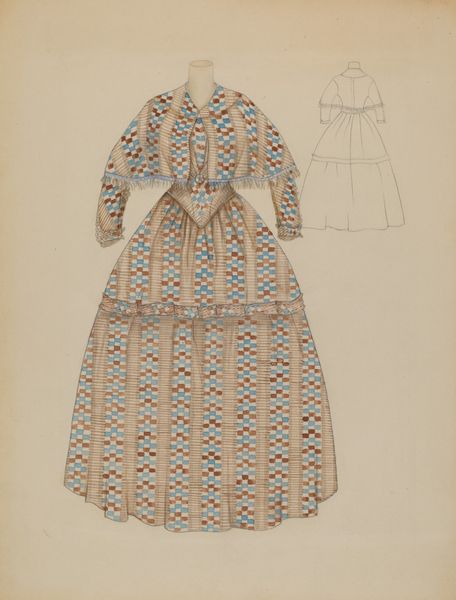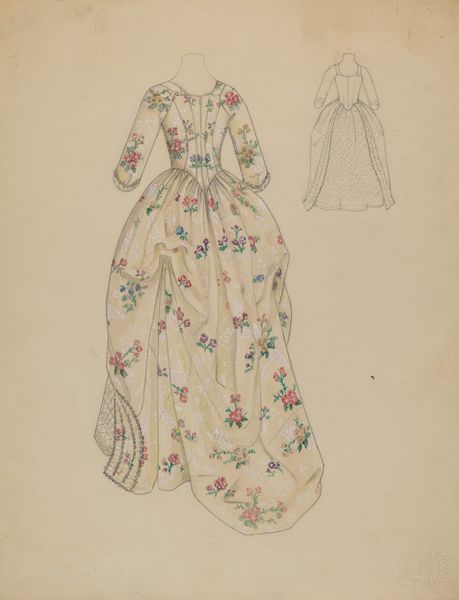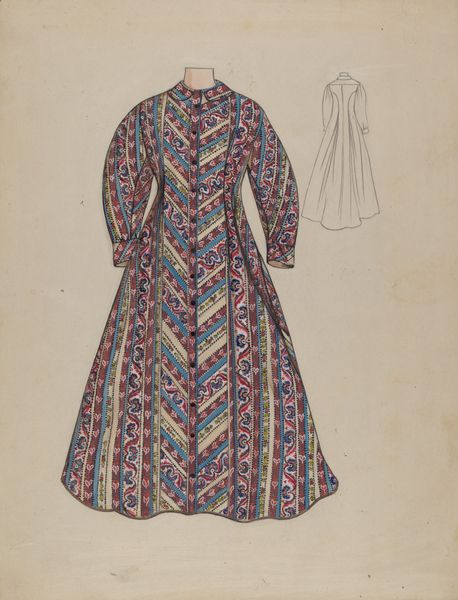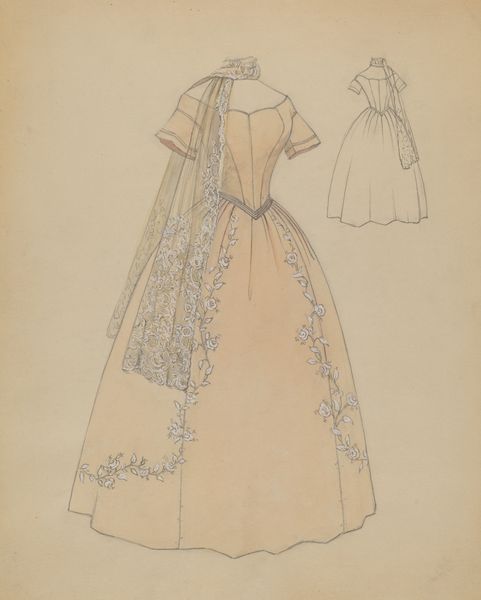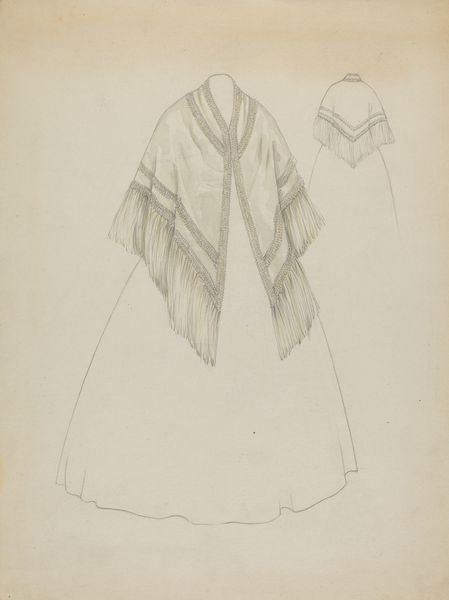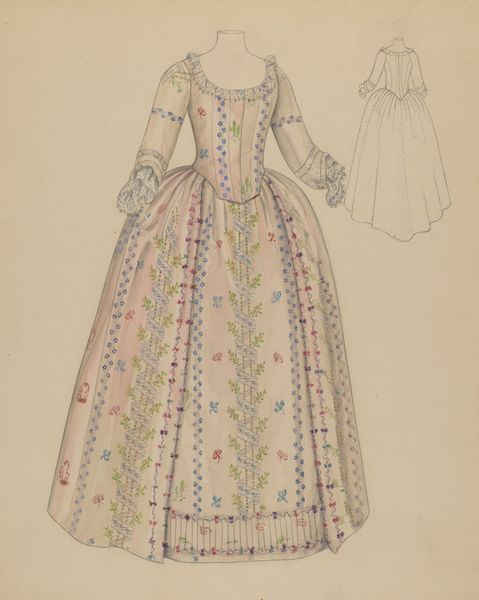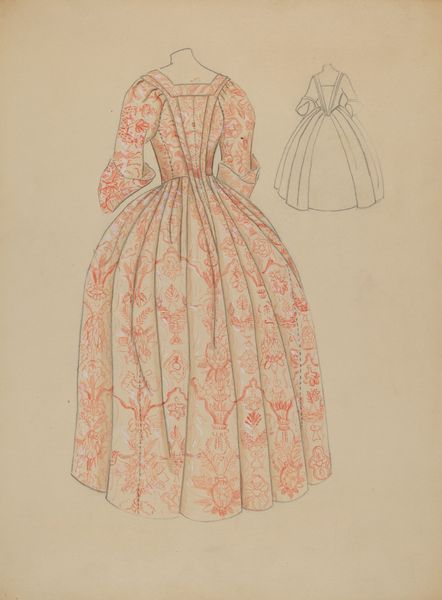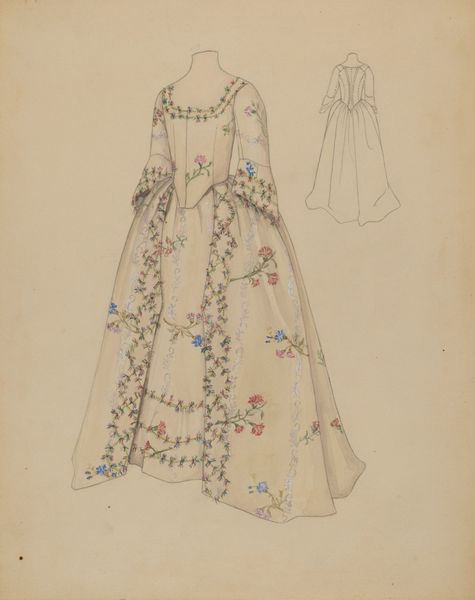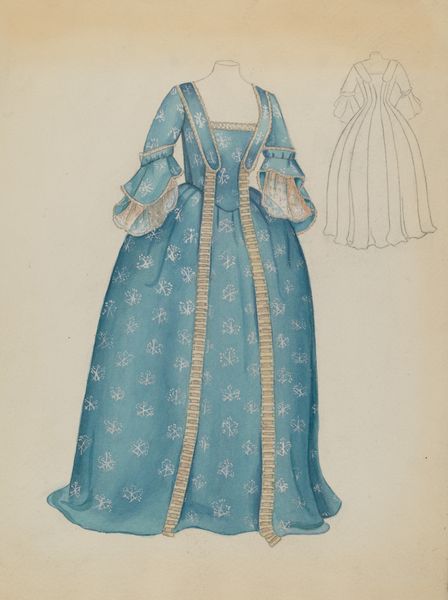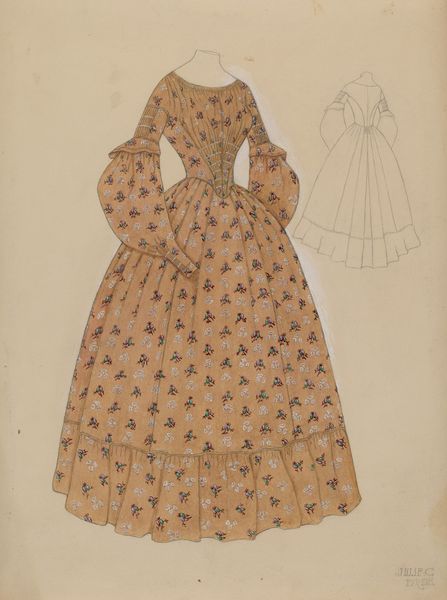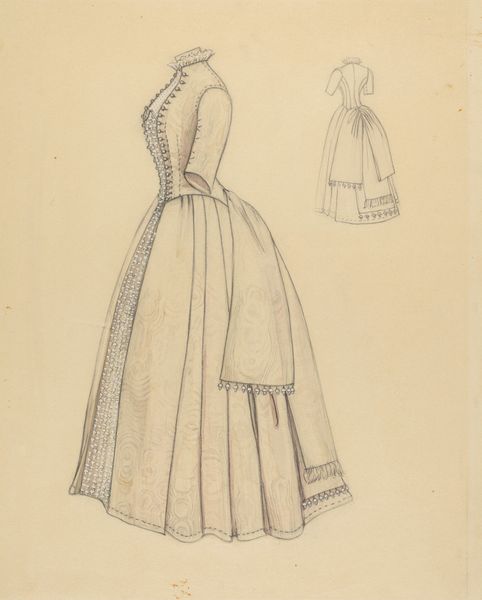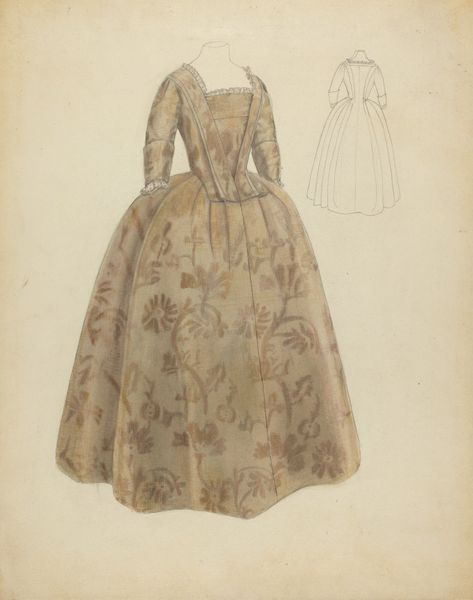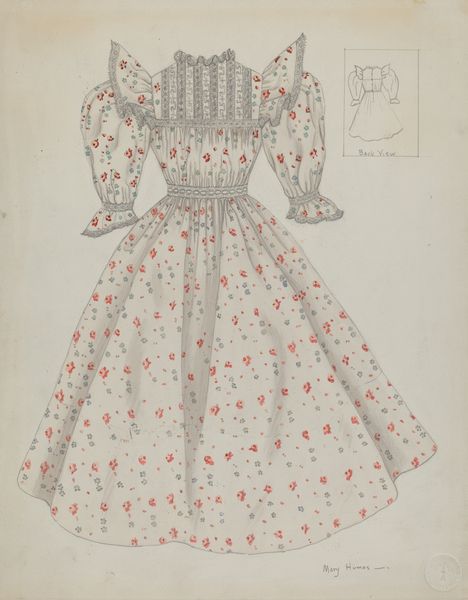
drawing, coloured-pencil, paper, pencil
#
drawing
#
coloured-pencil
#
paper
#
historical fashion
#
pencil
#
history-painting
#
textile design
#
academic-art
#
fashion sketch
Dimensions: overall: 29.9 x 22.9 cm (11 3/4 x 9 in.)
Copyright: National Gallery of Art: CC0 1.0
Curator: Roberta Spicer created this artwork, titled "Dress," around 1936. It is a colored pencil and pencil drawing on paper. Editor: My initial impression is of a rather charming but subdued design. The delicate florals and soft blue ribbons lend a feminine, almost nostalgic air, yet there's a formality to the structure that feels slightly rigid. Curator: Indeed. The historical context is important. This piece was produced during a period of evolving social norms for women. Fashion served as a battleground between tradition and modernity, mirroring shifts in gender roles and societal expectations. The high neckline and full sleeves, juxtaposed with the relatively vibrant pattern, speak to those tensions. Editor: From a purely compositional standpoint, the artist's rendering is fascinating. Notice the repetition of the floral and ribbon motif, how it creates a sense of order and rhythm, almost like a musical score translated into fabric. And the subtle shifts in color—how the pinks and blues play off the muted background. Curator: It's fascinating to consider how the design might have functioned in relation to constructions of femininity and power at the time. What sartorial messages about the wearer, her class, and her compliance with or resistance to societal expectations were being conveyed? Editor: The textile itself almost becomes a form of coded language. I wonder how different interpretations might arise based on the viewer's positionality—their own social and cultural framework? Curator: Absolutely. Even today, the work can be seen as reflective of constraints placed on women's expression. Looking at how women’s dress, still today, reflects ideas of gendered performances is so necessary to look at the legacies from that past. Editor: Looking closely reveals such subtle nuances of shade and shape. The use of line and color is incredibly disciplined, a quality that grants the work both restraint and visual richness. The visual form becomes intrinsically interwoven with these contextual interpretations, offering new insight into the relationship between visual language and power dynamics. Curator: Yes, thinking about “Dress” as something both intimately personal, in relation to Spicer's design practice, but also deeply embedded within wider sociocultural systems, reveals many of its resonances today. Editor: Ultimately, this exploration underlines how powerful looking and context truly intertwine to offer meaningful interpretations of this historical rendering.
Comments
No comments
Be the first to comment and join the conversation on the ultimate creative platform.
